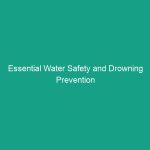Introduction
Good morning team,
Today, we’re diving into an important topic that affects not just our projects, but our Environment and community as well. Our focus is on the Essential Guide to Environmental Impact Assessments: Evaluating Potential Impacts. Understanding environmental impact assessments (EIAs) is crucial for ensuring Workplace Safety and Sustainability.
Why is this topic important? Because every project we undertake has the potential to impact the environment, and understanding those impacts is vital for protecting our health, safety, and the planet.
Understanding Environmental Impact Assessments
An Environmental Impact Assessment (EIA) is a systematic process used to evaluate the potential environmental Effects of a proposed project or development. The primary purpose of an EIA is to inform decision-makers and the public about the environmental consequences of their actions before they proceed.
In our daily operations, understanding EIAs helps us identify potential Hazards and risks associated with our projects. It’s essential to dispel the misconception that EIAs are just bureaucratic hurdles; they are vital tools that guide us toward sustainable practices and help us avoid costly mistakes.
Key Hazards, Risks, and Safety Considerations
When conducting an EIA, several key hazards and risks need to be considered:
- Pollution: Projects may lead to air, water, or soil contamination, affecting both the environment and public health.
- Habitat Destruction: Development can lead to the loss of wildlife habitats, impacting biodiversity.
- Resource Depletion: Overexploitation of natural resources can lead to long-term environmental degradation.
- Regulatory Non-compliance: Failing to adhere to environmental Regulations can result in legal penalties and project delays.
Ignoring these risks can lead to severe consequences, including health problems for employees and community members, legal actions, and damage to our company’s reputation.
Best Practices, Procedures, & Actionable Advice
To effectively evaluate potential impacts through EIAs, follow these Best Practices:
Step 1: Conduct a Scoping Process
Identify the key issues that will affect the environment. Engage stakeholders early to gather input and prioritize concerns.
Step 2: Data Collection and Analysis
Gather data on existing environmental conditions and assess potential impacts. Use both qualitative and quantitative methods to ensure comprehensive analysis.
Step 3: Impact Assessment
Evaluate the significance of potential impacts. Consider both direct and indirect effects on the environment and public health.
Step 4: Mitigation Measures
Develop strategies to avoid, minimize, or compensate for negative impacts. This could include adjusting project plans or implementing new technologies.
Step 5: Reporting and Review
Compile your findings into an EIA report. Ensure it is clear, concise, and accessible to all stakeholders for review and feedback.
For example, a construction project near a wetland should include mitigation measures such as creating buffer zones or implementing water treatment solutions to minimize impact.
Regulations, Standards, and Compliance
Understanding the regulatory landscape is crucial for compliance. Some key regulations include:
- National Environmental Policy Act (NEPA): Requires federal agencies to assess the environmental effects of their proposed actions.
- Environmental Protection Agency (EPA) Guidelines: Provides Standards for conducting EIAs and ensuring environmental protection.
- OSHA Regulations: Ensure that Workplace Safety measures are in place to protect employees during projects that may impact the environment.
Compliance with these regulations is not just about avoiding penalties; it’s about protecting our team and the environment we work in.
Employee Engagement & Discussion
Now, let’s engage with each other. Consider the following questions:
- What Safety challenges have you encountered related to environmental impacts?
- How can we improve our processes to better assess environmental risks?
- What additional resources do you think we need to conduct effective EIAs?
Your input is invaluable as we strive to improve our safety practices. Sharing your experiences can lead us to better solutions and foster a safer work environment.
Conclusion & Key Takeaways
In conclusion, understanding the Essential Guide to Environmental Impact Assessments: Evaluating Potential Impacts is vital for our daily operations. Remember:
- EIAs are essential for identifying potential environmental hazards.
- Adhering to regulations helps protect our health and safety.
- Your involvement and feedback are crucial in improving our safety practices.
Let’s prioritize safety and sustainability in our work. Thank you for your attention and commitment to making our workplace a safer environment for everyone.


